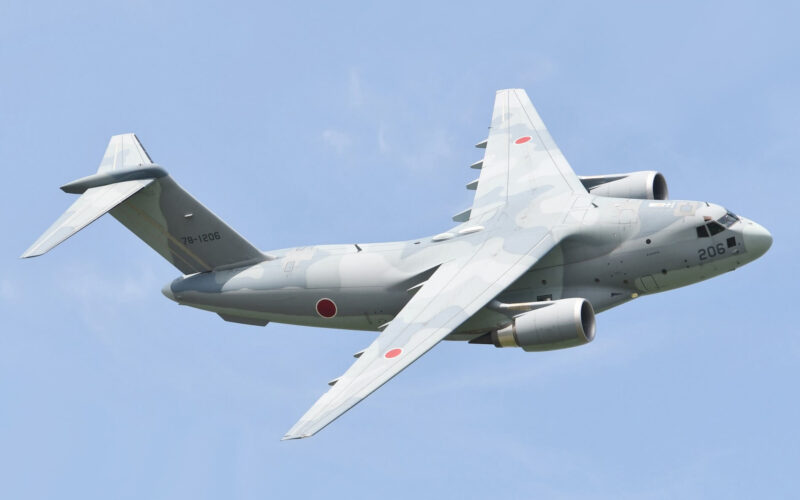The Japanese government will subject the Kawaski C-2 transport plane to unpaved runway landing tests in an attempt to convince the United Arab Emirates of acquiring the aircraft.
The C-2 was designed as a successor to the Kawasaki C-1 transporter. It entered service in 2016, and the Japan Air Self-Defense Force already operates 11 aircraft, with plans to acquire up to 20 by 2024.
While its performances largely surpass those of the C-1, with about four times the range and three times the loading weight of its predecessor, the C-2 was not specifically developed for takeoff and landing from uneven terrain. That specificity was excluded to reduce development costs and time, according to local media Sankei News.
But as it has yet to pick a transport plane for its military, the United Arab Emirates (UAE) requested an evaluation of the C-2 take-off and landing capabilities on unpaved land. In March 2020, the Defense Equipment Agency of the Japanese Ministry of Defense ran a test in Gifu Air Field (QGU) on the island of Honshu, Japan, and said the results were satisfying. Another test should be carried out in the presence of representatives from the UAE government in October 2020.
The C-2 is a twin-jet military transport aircraft built by Kawasaki Aerospace Company, with a high-wings and T-tail design, capable of being operated from relatively short runways. It is powered by two General Electric CF6-80C2K turbofan engines. As a cost-saving measure, it shares some structural elements with the Kawasaki P-1 maritime transport plane.
If it was to choose the C-2 over its competition, the United Arab Emirates Air Force would be the first foreign operator of the aircraft. The Airbus A400M Atlas is reportedly another candidate being examined. Unlike the C-2, the European turboprop airlifter was designed for rough terrain takeoff and landing.

